Bo
Boda, Tulsidas Dayalji (1923– 2003)
Born Princely State Kutch (Gujarat). Educated in Bombay. Participated in Quit India movement; jailed for 14 months. Joined Bolshevik Mazdoor Party, 1944. Joined Bolshevik Leninist Party of India, 1946. Organized Woolen Mill Kamgar Union at the Usha Mills, Bombay, 1947. Jailed, July 1947. Secretary, Bombay Bolshevik Leninist Party of India, 1947. Delegate, BLPI conference, 1948; elected to Central Committee. Delegate, Special Convention BLPI, October 1948. Entered SP with BLPI, 1948. Delegate to SP Convention, 1950. Joined SP (Loyalists), 1952. Secretary, All-India Federation of Textile Workers. Leader, Bombay Labour Union and LIC Employees’ Union. Joined SP (Lohia), 1956. Joined Samyukta Socialist Party, 1964. Leader, Kutch Satyagraha, 1968. Convenor, Samajwadi Abhiyan in Maharashtra and Gujarat. President, People’s Union for Civil Liberties, Gujarat. Author: The Human Rights – An Unending Struggle and Conflict (1997).
Compiled by Charles Wesley Ervin
Bogdanov, Aleksandr A. (1873–1928)
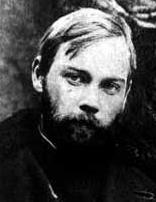 A physician by training, Bogdanov was one of the Old Bolsheviks, joining the Bolsheviks in 1903 but expelled in 1909 after leading the ultra-left, boycottist (or ultimatist) tendency. He maintained that the party could only work through illegal organizations (due to the suppression of political parties during this period). After 1911, he drifted from political activism to writing on philosophy, culture, and economics. Served as an Army doctor in WWI. He did not rejoin the Party, but after the October Revolution, he became an organizer and leader of Proletcult. After 1921, he left politics to work in the field of science while remaining a widely respected figure of Old Bolshevism. He died in April 1928 while experimenting with blood transfusions.
A physician by training, Bogdanov was one of the Old Bolsheviks, joining the Bolsheviks in 1903 but expelled in 1909 after leading the ultra-left, boycottist (or ultimatist) tendency. He maintained that the party could only work through illegal organizations (due to the suppression of political parties during this period). After 1911, he drifted from political activism to writing on philosophy, culture, and economics. Served as an Army doctor in WWI. He did not rejoin the Party, but after the October Revolution, he became an organizer and leader of Proletcult. After 1921, he left politics to work in the field of science while remaining a widely respected figure of Old Bolshevism. He died in April 1928 while experimenting with blood transfusions.
Bogdanov was an early exponent of Science Fiction and close to Anatoly Lunacharsky and Maxim Gorky. See The Positive Programme of Russian Positivism, a study of his novel Red Star: The First Bolshevik Utopia (1908).
During the early years of the Bolshevik faction, Bogdanov was Lenin’s closest supporter, and Lenin was at first impressed with his three-volume Empirio-Monism, published in Moscow between 1904 and 1906.
Lenin’s Materialism and Empirio-Criticism, a polemic against Bogdanov and others, dealing with the influence of Positivism in the Bolshevik Party. Plekhanov strongly condemned this book and after Bogdanov’s ultra-left otzovism in 1908, Lenin took time off from political work to settle accounts with Bogdanov’s ideas on modern science and dialectics.
See Aleksandr Bogdanov Archive.
Bogdanov, B. (1884–1919)
Menshevik Liquidator. Member, War Industries Committee. Member Executive Committee of Petrograd Soviet, Bureau and Committee of Defence. Representative of Soviet on Duma Committee.
Böhm-Bawerk, Eugen von (1851–1914)
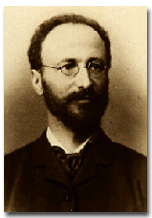 Austrian Minister of Finance, 1889–1904, professor and leader, along with Carl Menger and Friedrich von Weiser, of the Austrian school of economists. Böhm-Bawerk, had a special interest in the theory of capital and interest. Author of several books, including his 1896 work, Karl Marx and the Close of His System, a classic attack on Marxist economics.
Austrian Minister of Finance, 1889–1904, professor and leader, along with Carl Menger and Friedrich von Weiser, of the Austrian school of economists. Böhm-Bawerk, had a special interest in the theory of capital and interest. Author of several books, including his 1896 work, Karl Marx and the Close of His System, a classic attack on Marxist economics.
Bohr, Niels (1885–1962)
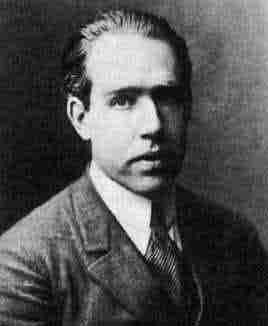 One of the foremost scientists of the 20th century, Bohr was the first to apply the quantum theory to the problem of atomic and molecular structure. He was a guiding spirit and major contributor to the development of quantum physics; leader of the renowned Copenhagen School which struggled to work out a consistent materialist understanding of physical science during the unfolding of quantum and relativistic discoveries, Bohr maintained a long dialogue with Einstein over the meaning of these developments, and is responsible for the Correspondence Principle, one of the most important concepts for the understanding of the relation between quantum events and experience in the “macro-world”.
One of the foremost scientists of the 20th century, Bohr was the first to apply the quantum theory to the problem of atomic and molecular structure. He was a guiding spirit and major contributor to the development of quantum physics; leader of the renowned Copenhagen School which struggled to work out a consistent materialist understanding of physical science during the unfolding of quantum and relativistic discoveries, Bohr maintained a long dialogue with Einstein over the meaning of these developments, and is responsible for the Correspondence Principle, one of the most important concepts for the understanding of the relation between quantum events and experience in the “macro-world”.
Bohr was brought up in a wealthy and influential Copenhagen family, his father a renowned physiologist and his brother a mathematician. After completing his doctorate in the electron theory of metal at the University of Copenhagn, Bohr joined J.J. Thomson at Cambridge, but in 1912 joined Rutherford’s in Manchester, a group studying the structure of the atom.
It was here that Bohr worked on the theoretical implications of Rutherford’s nuclear model of the atom and he was among the first to see the importance of the number of electrons in an atom’s structure in determining the physical and chemical properties of an element. Bohr was the first to see that a stable atomic structure was possible if energy levels were inherently restricted to discrete levels, a possibility made conceiveable by Max Planck’s discovery of the discrete properties of radiation spectra. Bohr succeeded in deriving the observed line spectrum of light emitted by atomic hydrogen from an analysis of the electron structure of the hydrogen atom.
Bohr returned to Copenhagen in 1912, and was appointed to a professorship from which position he led research into the fundamental quantum physics for the rest of his life, with many of the great physicists of the period, including Werner Heisenberg coming to work in Copenhagen.
It is difficult to imagine the situation in which physicists were working in this period as research continued to produce mathematical entities which defied any attempt to visualise there physical meaning, other than being part of equations which accurately predicted experimental results, and indeed the experimental results themselves seemed to totally defy logical comprehension.
During the early 1920s, Bohr to piece together the theory of sub-atomic behaviour based on the quantum conception, and perhaps his most important achievement was the formulation of two general principles which he used to guide the interpretation of quantum theory: the Complementarity Principle and the application of the Correspondence Principle first developed by Einstein in his formulation of Relativity.
According to the Correspondence Principle, as applied by Einstein, the predictions of Relativistic equations had to converge to those of Newtonian mechanics, for small speeds and masses; in application to quantum mechanics, Bohr held that there had to be a correspondence between each ‘energy jump’ predicted by the quantum hypothesis and the frequency of light emissions observable and describable by classical mechanics, given that the frequency of light is related to its energy by a fixed ratio, Planck’s constant.
According to the Complementarity Principle, a quantum interaction must be describable in terms of wave-concepts and in terms of particle-concepts, and the two descriptions are together taken as a complete description of the properties of the interacting objects, despite the fact that no interaction can simultaneously correlate with both systems of concepts completely.
In the early years, Bohr stressed the tentative and symbolic nature of the atomic models that were being used, but as the theory continued to consolidate he came to the view that quantum mechanics was a valid representation of reality, and that the statistical interpretation of the field equation had to be accepted as a complete description of a system, rather than indicating the action of an as yet undiscovered type of interaction.
While Bohr’s view has come to be accepted by the great majority of physicists, Albert Einstein retained his assertion that the quantum theory offered an incomplete description of physical reality to the end, and looked forward to the development of a Unified Field Theory to provide the hoped-for complete description.
In his account of his discussions with Einstein, Bohr emphasised how important Einstein’s challenging objections had been to the evolution of his own ideas and what a deep and lasting impression they had made on him and there is no doubt that this respect was reciprocated by Einstein.
During the 1930s Bohr continued to work on the epistemological problems raised by the quantum theory and also contributed to nuclear physics. His concept of the atomic nucleus, played an essential part in 1939 in the understanding of nuclear fission. When Denmark was occupied by Germany in 1940, Bohr did what he could to maintain the work of his institute and its integrity. In 1943, under threat of arrest because his Jewish family and his public anti-Nazi opinions, Bohr was smuggled out to Sweden by the Danish resistance, from where he flew to England before joining the Manhattan project in Los Alamos.
Like many of his colleagues Bohr expressed concern about the dangers posed by atomic weapons and was instrumental in convening the First International Conference on the Peaceful Uses of Atomic Energy in 1955, and in creating the European Council for Nuclear Research (CERN).
Bolívar, Simón (1783–1830)
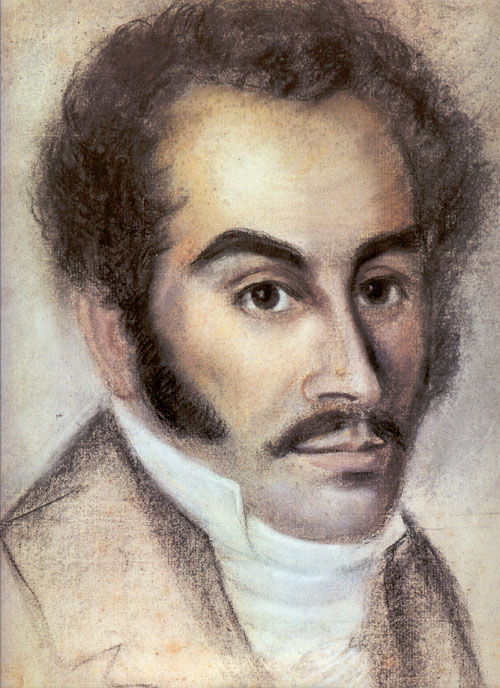 Simón José Antonio de la Santísima Trinidad Bolívar Palacios y Blanco, ‘El Liberator’ of Latin Americans under the Spanish Monarchy and President of the first independent Latin American union (1819–1830) the Gran Colombia (present day Bolivia, Colombia, Ecuador, Panama, Peru and Venezuela). The man commonly referred to as Simón Bolívar was post-mortem considered to be a revolutionary hero in former Gran Colombia nations, yet was scrutinised heavily by Karl Marx.
Simón José Antonio de la Santísima Trinidad Bolívar Palacios y Blanco, ‘El Liberator’ of Latin Americans under the Spanish Monarchy and President of the first independent Latin American union (1819–1830) the Gran Colombia (present day Bolivia, Colombia, Ecuador, Panama, Peru and Venezuela). The man commonly referred to as Simón Bolívar was post-mortem considered to be a revolutionary hero in former Gran Colombia nations, yet was scrutinised heavily by Karl Marx.
Bolívar was reared in Caracas, Venezuela in an aristocratic family of noble Basque descent. He was the youngest of three children, whom were raised mostly by his family slave Hipolita. Bolívar’s father Coronel Don Juan Vicente Bolívar y Ponte died when he was two years of age, and after his mother Maria Juanita Cabeza Grande died when he was eight years of age. After which, Bolívar passed under the guardianship of many tutors and professors, specifically Don Simón Rodriguez. Rodriguez was the most influential in transmitting enlightened philosophy and ideas to Bolívar, in particular those of Liberalism, Free Trade, and Republicanism.
At the age of 14 Bolívar enlisted in the military academy of Veraguas in Panama after Rodriguez was accused of conspiracy against the Spanish crown. At the age of 21 he witnessed the coronation of Napoleon in Paris. It is said that his vehemence for Latin American emancipation is a fruition of this event. Bolívar returned to Venezuela in 1807 and after a successful junta, and the formation of the United Provinces of New Granada in 1810, was given command of the nation’s army, with the sole aim of ejecting Spanish presence in Latin America. After the failed establishment of a Venezuelan Republic in 1812, Bolívar wrote the Cartagena Manifesto which outlined his opinions concerning the causes of its fall – specifically the use of federalism, republicanism, and the Roman Catholic Church, all of which he viewed as opponents to a state in the time of war.
In 1813 Bolívar launched offensives in Venezuela (known as the Admirable Campaign), where he was bestowed the informal title of El Liberator after a restoration of the Venezuelan Republic. This republic was short lived, when it was reinstated in monarchist hands after a rebellion led by José Tomás Boves in 1814. After putting down a republican rebellion in Bogota which soon rose again, he was forced to reinforce the area with assistance from a foreign army in 1815. After pleading in Jamaica and failing, he managed to gain the support of Alexandre Pétion, the leader of newly independent Haiti. It is here that it is debated whether Bolívar was previously opposed to slavery or whether he only opposed it after his meeting with Pétion, but it is certain that Pétion would not supply reinforcements if Bolívar continued to support slavery.
In 1817 Bolívar and his Haitian soldiers initiated the independence campaign for Gran Colombia which was won at the Battle of Boyacá in 1819. From a consolidated base in Gran Colombia Bolívar defeated the Royalist forces of Venezuela at the Battle of Carabobo in 1821 and Ecuador at the Battle of Pichincha in 1822. The new empire of Gran Colombia inevitably had Bolívar as its president.
In 1824 Bolívar conquered Peru and was named Dictator of Peru by the Peruvian Congress. After the Battle of Ayacucho all Spanish forces in Latin America were annihilated. Bolívar at the Congress of Upper Peru in 1825 declared the creation of the Republic of Bolívia, one of the few countries to be named after a man.
Though the constitution of Bolívia reflected French and Scottish Enlightenment values, as well as those of classical philosophy, Bolívar moved to pen a new constitution of all Gran Colombia in response to a number of rebellions in Venezuela. The constitution allowed him presidency for life of a Centralized Gran Colombian state, as well as the right to select a successor. In theory the presidency was under congressional control by a system of checks and balances.
Debates at this time in the Convention of Ocana in early 1828 appeared to favour a more Republican Federalist style of government, yet Bolívarian delegates withdrew from the Convention as a reaction, thus making the Convention redundant. As a last resort to achieve his aims, Bolívar declared himself dictator through the Decree of Dictatorship in August, 1828. This was a move intended to consolidate central power over all of Gran Colombia, which would theoretically be only temporary. He was almost a victim of an assassination attempt, and eventually overwhelming rebellion in New Grenada, Venezuela and Ecuador forced him into exile in 1830. He resigned his presidency yet died as a result of tuberculosis in Santa Marta, New Grenada before departing on December 17, 1830.
In a February 14, 1858 letter to Engels, Marx describes Bolívar as the “dastardly, most miserable and meanest of blackguards,” and sarcastically remarks that to “[describe him] as Napoleon I was altogether too much. Bolivar is a veritable Soulouque (the former slave, later President of Haiti).” It is clear that Bolívar can easily be described as a Bonapartist, yet is considered by many contemporary Latin Americans (as well as most Latin Americans since the 1840s) as the liberator of their nations – even though their nations exist as a result of uprisings against his centralized Imperial Gran Colombian body. Venezuela, for example is officially a Bolivarian republic. Consequently, it can be concluded that Bolívar is a modern symbol of Liberty for Latin Americans regardless of his Imperial Bonapartist tendencies. This tendency towards the usage of Bolívar as a symbol of Liberty is displayed in the Argentinean Trotskyist Nahuel Moreno’s opinion that:
“Bolivar’s thinking was the most advanced and internationalist of the first Latin American struggles for independence, thinking that today is continued in proletarian internationalism of the most advanced revolutionaries in Latin America, the Trotskyists.”
Further Reading: Bolívar is portrayed by Marx in a manner which was deemed to be written in a ‘partisan style’ by the managing editor of the New York Tribune Charles Dana in this article: Karl Marx in the New American Encyclopedia 1858: Bolivar y Ponte. A comparison of Marx’s analysis of Bolívar with the Argentinean Trotskyist Nahuel Moreno’s in Proletarian Revolution, No. 29 (Summer 1987): Marx’s Bolivar Meets Moreno’s Bolívar. Hal Draper examines Marx’s rejection of authoritarianism and Bonapartism via his analysis of Bolívar in Hal Draper’s: Karl Marx and Simon Bolivar (Winter 1968).
Boltzmann, Ludwig (1844–1906)
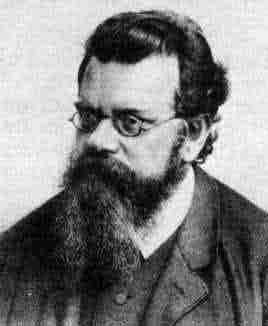 German Physicist whose greatest achievement was in the development of statistical mechanics, which predicts the visible properties of matter such as viscosity, thermal conductivity, etc. on the basis of a statistical study of their atomic behaviour; Boltzmann was driven to depression and ultimate suicide by what he regarded as the inexorable and destructive influence of positivism. He engaged in an extended exchange of letters with Ernst Mach, but was unable to formulate a clear critique of Mach’s views, and never published a considered formulation of his epistemology.
German Physicist whose greatest achievement was in the development of statistical mechanics, which predicts the visible properties of matter such as viscosity, thermal conductivity, etc. on the basis of a statistical study of their atomic behaviour; Boltzmann was driven to depression and ultimate suicide by what he regarded as the inexorable and destructive influence of positivism. He engaged in an extended exchange of letters with Ernst Mach, but was unable to formulate a clear critique of Mach’s views, and never published a considered formulation of his epistemology.
Boltzmann received his doctorate at the University of Vienna in 1866, and he went on to professorships in mathematics and physics at Vienna, Graz, Munich, and Leipzig.
In the 1870s Boltzmann published a series of papers in which he derived the second law of thermodynamics (that every process in nature increases the total entropy in the system and is thus essentially irreversible), from the laws of mechanics and the theory of probability applied to the motions of the atoms. In this way, Boltzmann showed that Entropy, which had previously been understood only in terms of its derivation from the work-energy equations of classical physics, was a statistical measure. This lead to the conception of the equilibrium state of a thermal system as the “most probable state”. These studies led to the formulation of the theorem of “equipartition of energy”. Perhaps his most startling achievement is his famous equation S=k.logW expresses the equivalence between Entropy (S) and the “probability” of a state (W).
Though his work on statistical mechanics was strongly attacked and long-misunderstood, his conclusions were finally supported by the discoveries in atomic physics that began shortly before 1900 and by recognition that phenomena such as Brownian motion, could be explained only by statistical mechanics.
It is noteworthy that while Boltzmann was possibly the first physicist to introduce mathematical formulations of physical laws which challenged intuitive and visual representation of the physical world, he was a staunch advocate of philosophical materialism and a life-long opponent of all attempts to give succour to subjective idealism from the strange discoveries of modern physics. Boltzmann left no philosophical writings, but the notes taken from his impromptu lectures and his numerous letters to Ernst Mach and Franz Brentano, collected and published by his family, show his struggle against the sceptical conclusions being drawn by many scientists at the turn of the century, and in this sense he was a precursor of Einstein. He found the issues very confusing and became increasingly demoralised by his inability to resolve the questions being thrown up by the revolutionary development taking place in physics and eventually committed suicide.
Bonaparte, Napoleon III
See Napoleon
Boran, Behice (1910–1987)
The Chairwoman of the Worker Party of Turkey (TIP).
She became associate professor of sociology in the Ankara University. She found in 1950 the Turkish Peace Association. A year later she was sentenced to prison for 15 months, because of the attitude of the association against the Korean War. In 1953 she was arrested again connected with the Trial of the Communist Party. A year later she was released. She joined in 1962 Worker Party of Turkey (TIP). In 1970 at the 4th Congress of the Party she was elected as the general chairwoman. After the military putsch in 1971 the Party was banned and she was sentenced again to prison for 15 months. In 1975 she found the Second TIP. After the military putsch in 1980 she went to Europe. She died in 1987 in Brussels.
Bordiga, Amadeo (1889–1970)
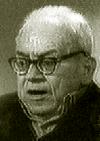 One of the top leaders of the Italian CP, was the best known figure of the Italian Left Faction, which was also known as the Prometeo group, after its journal Prometeo (Prometheus). He was arrested by the Mussolini led-government in 1926, and was still unable to play a direct role in his group in 1929, when the Comintern expelled him on charges of Trotskyism. The Bordigists were the first Italian group to adhere to the Left Opposition, but their inveterate sectarianism led to their separation at the end of 1932.
One of the top leaders of the Italian CP, was the best known figure of the Italian Left Faction, which was also known as the Prometeo group, after its journal Prometeo (Prometheus). He was arrested by the Mussolini led-government in 1926, and was still unable to play a direct role in his group in 1929, when the Comintern expelled him on charges of Trotskyism. The Bordigists were the first Italian group to adhere to the Left Opposition, but their inveterate sectarianism led to their separation at the end of 1932.
Borkenau, Franz (1900–1957)
Franz Borkenau was born in Vienna in 1900. He joined the German Communist Party and served as an official of Comintern from 1921 until his disillusionment in 1929.
For a time he worked at the Institute for Social Research in Frankfurt, as a protégé of Carl Grünberg. Most of his time at the Institut was spent probing the ideological changes that accompanied the rise of capitalism and in 1934 the Institut published his The Transition from the Feudal to the Bourgeois World View.
Borkenau went to Spain in September 1936, visiting Barcelona, Valencia, Madrid and other Republican areas during the Spanish Civil War. He stayed for two months but returned again in January 1937. On his second visit he voiced criticisms of the behaviour of Soviet agents and was denounced as a Trotskyisy and arrested.
After his release, Borkenau wrote his highly acclaimed book, The Spanish Cockpit (1937). Franz Borkenau died in 1957.
Born, Max (1882–1970)
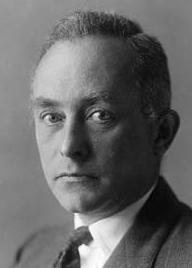 German physicist, winner of the Nobel Prize for Physics in 1954, with Walther Bothe of Germany, for his statistical formulation of the behaviour of subatomic particles.
German physicist, winner of the Nobel Prize for Physics in 1954, with Walther Bothe of Germany, for his statistical formulation of the behaviour of subatomic particles.
In 1921, the year he became professor of theoretical physics at the University of Göttingen, Born produced a very precise definition of quantity of heat, the most satisfactory mathematical statement of the first law of thermodynamics. In 1926, after his student Werner Heisenberg had formulated the first laws of a new quantum theory, Born collaborated with him to develop the mathematical formulation that would adequately describe it. Somewhat later, when Erwin Schrödinger put forward his quantum mechanical wave equation, Born showed that the solution of the equation has a statistical meaning of physical significance. Born also introduced a useful technique, known as the Born approximation, for solving problems concerning the scattering of atomic particles. He and J. Robert Oppenheimer initiated a widely used simplification of the calculations dealing with electronic structures of molecules.
In 1933 Born fled the Nazis and became a lecturer at Cambridge. He became a British subject in 1939. After his retirement in 1953 Born returned to Göttingen.
Bornstedt, Adalbert von (1808–1851)
A one-time Prussian officer and newspaper publisher in Brussels.
Borochov, Ber (1881–1917)
 Theoretician of Labor Zionism. Borochov was born in a shtetl in the Ukraine and joined the Russian Social Democratic Labor Party (RSDLP) in 1901. His ideology was a mix of Zionism and Marxism, and this led to his expulsion from the RSDLP for Zionism. Borochov, as a member of socialist Poalei Tzion (“Workers of Zion”), was a key voice in the working-class opposition to the prospect of the Jews accepting Uganda as a national homeland instead of Palestine. He came to America in 1914 and was spokesman for Poalei Tzion until 1917, when he returned to Russia in the aftermath of the February 1917 revolution. He organized Jewish brigades to defend the revolution, and died of pneumonia in Russia in December 1917. His body was transferred in 1963 to the cemetery of Kibbutz Kinneret.Borochov’s ideas were central to the left of the pre-independence Jewish settlement in Palestine and to the labor and kibbutz movements in particular. He believed that Jews could never have a normal class structure in the Diaspora, and that it was only in a Jewish homeland that a Jewish working-class and socialism could develop. He was also a firm believer in the common interests of the Jewish and Arab working classes in Palestine.
Theoretician of Labor Zionism. Borochov was born in a shtetl in the Ukraine and joined the Russian Social Democratic Labor Party (RSDLP) in 1901. His ideology was a mix of Zionism and Marxism, and this led to his expulsion from the RSDLP for Zionism. Borochov, as a member of socialist Poalei Tzion (“Workers of Zion”), was a key voice in the working-class opposition to the prospect of the Jews accepting Uganda as a national homeland instead of Palestine. He came to America in 1914 and was spokesman for Poalei Tzion until 1917, when he returned to Russia in the aftermath of the February 1917 revolution. He organized Jewish brigades to defend the revolution, and died of pneumonia in Russia in December 1917. His body was transferred in 1963 to the cemetery of Kibbutz Kinneret.Borochov’s ideas were central to the left of the pre-independence Jewish settlement in Palestine and to the labor and kibbutz movements in particular. He believed that Jews could never have a normal class structure in the Diaspora, and that it was only in a Jewish homeland that a Jewish working-class and socialism could develop. He was also a firm believer in the common interests of the Jewish and Arab working classes in Palestine.
See Borochov Archive.
Bose, Dulal (1918–2001)
Born in Calcutta. Educated Taltola High School and Vidyasagar College, Calcutta; took diplomas in French and Russian literature. Joined Revolutionary Socialist League, 1939. Founding member, Bolshevik Leninist Party of India, 1942. Worked at Mackenzie Lyall & Co., Calcutta, during the war. Editorial Board, Permanent Revolution . Secretary, Titagarh Paper Mills Employees’ Union, Calcutta Match Workers’ Union, and Calcutta Firefighters’ Union. Delegate, BLPI conference, 1948. Entered SP with BLPI, 1948. Split from SP with a group of anti-entry dissidents who organized around the paper, Inquilab [Revolution]. Editor, Inquilab (Calcutta weekly). Fused with the Communist League, 1954. Joined Socialist Labour League, the Indian affiliate of the International Committee of the Fourth International (Gerry Healey tendency), 1991. Contributed to the party newspapers, Shramiker Path [Workers’ Path] and Anthrajathik Shramik [International Worker]. Devoted the last decade of his life to translating the works of Leon Trotsky into Bengali.
Compiled by Charles Wesley Ervin
Böttcher, Paul (1891–).
Printer, member of Socialist Youth in 1907, chairman of Leipzig group in 1908, member of SPD, youth full-timer at trade-union level. Opposed War. Joined USPD in 1917, Chief Editor of Sozialdemokrat in Stuttgart in 1920. In USPD Left, head of trade-union left opposition. Joined VKDP (Vereinigte Kommunistische Partei Deutschlands/United Communist Party of Germany) in 1920. Kidnapped by supporters of Kapp during putsch. In February 1921, Chief Editor of Die Rote Fahne, member of the Zentrale in August 1921. In 1923 chairman of parliamentary fraction in Saxony, secretary of West Saxony district, favoured support for and joining workers’ government. Minister for the Economy in Zeigner’s government in October 1923, driven from his ministry by Reichswehr. Member of right opposition, expelled from KPD (Kommunistischen Partei Deutschlands/German Communist Party) in 1929, founder, with Brandler, of KPO; in exile in Switzerland during 1933–46. Arrested on return to Germany, taken to USSR after sentence in absentia to two years in jail, held in various camps and prisons until 1955. Released that year, returned to DDR and admitted to SED in 1956; Chief Editor of Leipziger Volkszeitung until he retired in 1968. According to Hermann Weber, Böttcher worked for Soviet intelligence services from 1927, and arrested in Switzerland for this reason.
Bowerman, Charles William (1851–1947)
General Secretary of the London Society of Compositors 1892–1906 and later its parliamentary secretary. Member of the Parliamentary Committee (later General Council) of the TUC from 1897 and its secretary 1911–23, at a time when this position had less importance than it later assumed. MP for Deptford 1906–31. A trade unionist of the old craft type, much concerned with the payment of insurance and friendly benefits through the unions.
Bottomore, Thomas Burton (T.B.) (1920–1992)
British sociologist, a prolific editor and translator of Marxist works, notably his collections published in 1963: Marx’s Early Writings and Selected writings in Sociology and Social Philosophy. Bottomore was Secretary of the International Sociological Association from 1953 to 1959 and a member of the British Labour Party. His main academic posts were: Reader in Sociology, London School of Economics, 1952–1964; Professor of Sociology and Head of the Department of Anthropology, Political Science and Sociology, Simon Fraser University, Vancouver, British Columbia, 1965–1967; Professor of Sociology, University of Sussex, 1968–1985. Bottomore has edited and contributed to countless journals of sociology and political science, including editing A Dictionary of Marxist Thought in 1983 and The Blackwell Dictionary of Twentieth-Century Social Thought in 1993.
Boudin, Louis B. (1874–1952)
Russian-born Jewish-American Marxist theoretician, writer, politician, and lawyer. He is best remembered as the author of a two volume history of the Supreme Court's influence on American government, first published in 1932.
Early years
Louis B. Boudin was born Louis Boudianoff in imperial Russia on December 15, 1874. He was born into a middle-class family, the son of a shirt manufacturer. The family emigrated to America in 1891 and settled in New York City. Louis worked in the garment industry as a shirtmaker and as a private tutor. At the same time, Boudin began legal studies, gaining a Master’s Degree from New York University and being admitted to the New York State Bar Association in 1898.
Political career
In America, Boudin was first a member of the Socialist Labor Party of America (SLP). He was a member of the governing National Executive Board of the SLP’s trade union affialiate, the Socialist Trade and Labor Alliance (ST&LA) from 1898 to 1899. Boudin was also a delegate to the United Hebrew Trades organization in New York City at that same time.
Boudin wrote his first political articles in the Yiddish language, contributing works on aesthetics and the materialist conception of history (historical materialism) to such publications as Di Zukunft and Di Naye Geist.
Boudin left the Socialist Labor Party during the party fight of 1899, casting his lot with the dissident faction headed by Morris Hillquit and Henry Slobodin. This dissident SLP organization would eventually become one of the main pillars of the new Socialist Party of America, established in the summer of 1901.
From May 1905 through October 1906, Boudin wrote a series of articles expounding upon Marxism which were published in the Chicago magazine The International Socialist Review. These articles were collected in book form as The Theoretical System of Karl Marx in the Light of Recent Criticism in February 1907.The title was published by the leading radical publishing house of the day, Charles H. Kerr & Co., and was kept in print continuously over the next two decades through several reissue editions. The book, a defense of such orthodox Marxist tenanets as the labor theory of value and historical materialism against their critics of the day, established Boudin’s place as one of the foremost American authorities on Marxism among a generation of young political activists.
Boudin was elected a delegate of the Socialist Party of America to the 1907 Stuttgart Congress and the 1910 Copenhagen Congress of the Second International.
Boudin was frequently a candidate for public office on the Socialist Party ticket. He ran for Judge of the New York Court of Appeals in 1910, 1914 and 1917, and for Chief Judge in 1916. He also ran for Justice of the New York Supreme Court (2nd District) in 1910, 1912, 1919.
Together with Ludwig Lore and Louis C. Fraina, Boudin was a founding editor of The Class Struggle, a Marxist theoretical magazine which first saw print in May 1917. The Class Struggle published news and commentary about revolutionary socialist events in Europe, including translations of works by some of the leading figures of the Zimmerwald Left, and was an important influence on the formation of the Left Wing Section of the Socialist Party in 1919 — a group which provided the core of the Communist Party of America and Communist Labor Party later in that year. Boudin had left the project by this juncture, however, as a brief notice in the September–October 1918 issue indicated that he had resigned his position as an editor and member of the Socialist Publication Society owing to “differences concerning the policy of the magazine.”
Life after politics
After the formation of the Communist Labor Party of America and the Communist Party of America, Boudin shied away from organized politics. He did, however, teach in the Communist Party-sponsored Workers’ School in New York in the late 1920s and occasionally contributed articles to the CP’s artistic magazine, The New Masses during the latter half of the 1930s. Boudin repudiated communism by 1940, although he remained a staunch defender of the civil liberties of Communist Party members. Throughout the 1930s and 1940s Boudin was a frequent contributor of book reviews to scholarly journals such as the Columbia Law Review, The American Journal of Sociology, and The Journal of Politics.
In addition to working as a lawyer, winning several cases related to the rights of workers to organize trade unions, Boudin also wrote a two volume work called Government by Judiciary, revisiting a topic which he had dealt with in a previous shorter book. In this work, never much read by the radical movement of the day, Boudin argued that the democratic rights of the people had been usurped by the judicial branch of government. While not influential with political activists of the period, Boudin’s book remained in use among law students for decades, according to historian Paul Buhle.
Death and legacy
Louis Boudin died in 1952.
His papers reside at Columbia University in New York City and include the manuscript of an unpublished book, Order Out of Chaos, a study of economic crises.